Bean Garden Ideas: Creative Ways to Grow Delicious Beans
Gardening can be a fun and rewarding hobby, especially when you grow your own beans. Whether you have a large backyard or just a small balcony, there are many creative ways to set up a bean garden that can fit your space and needs. “Discovering different ways to support and grow bean plants can make your garden more productive and enjoyable.”
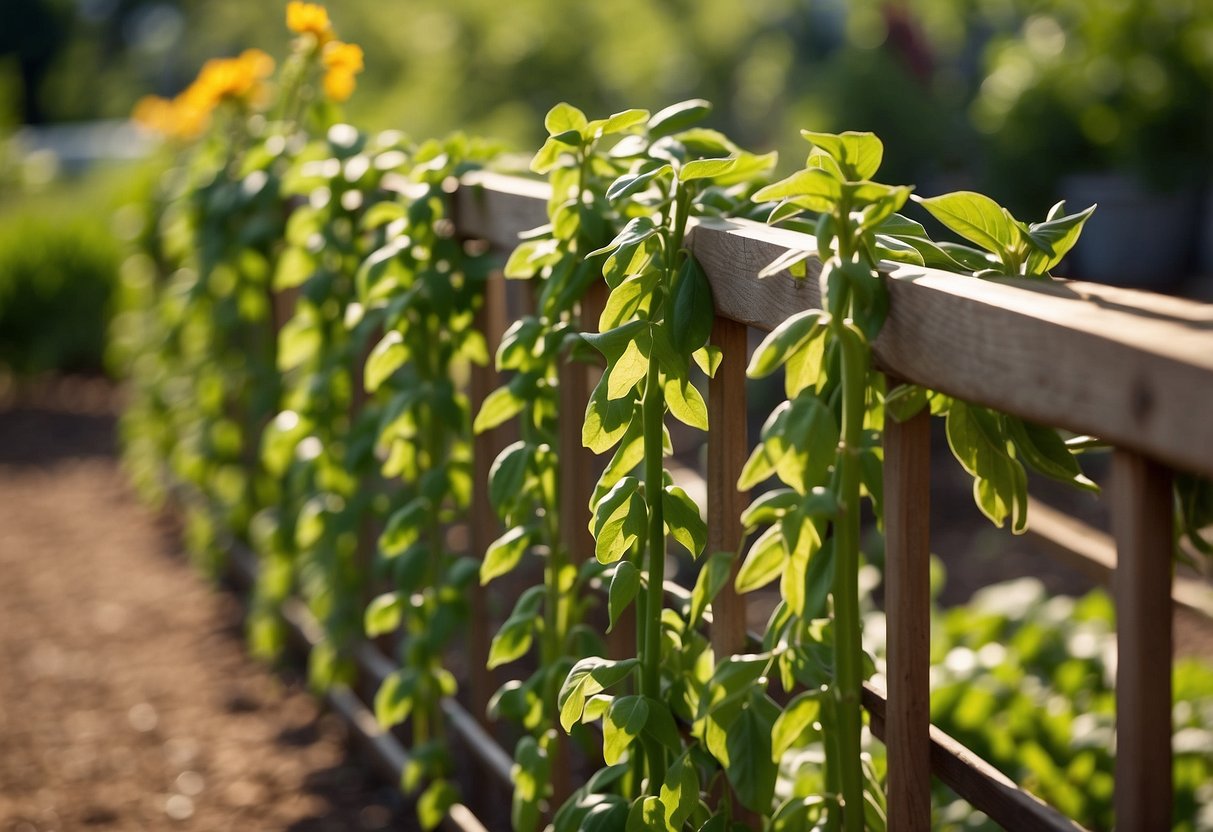
You’ll find that beans are not only easy to grow but also add a lovely touch to your garden with their vibrant green vines and colorful pods. With a few simple materials and a bit of planning, you can create a thriving bean garden that provides fresh produce for you and your family.
1) Raised Bed Trellis Magic

Using a raised bed trellis can make a big difference in your garden. This setup helps plants grow upward, saving space.
You can build a simple bean trellis using wood and wire mesh. It’s great for small spaces and lets your beans climb high.
Pole beans like Emerite do well on these trellises. Your garden will look neat and produce more.
2) Garden Arbor Delight

Imagine walking through your garden under a beautiful arbor adorned with climbing beans. This structure not only supports your plants but also adds charm to your outdoor space.
A pergola-style arbor lets you grow beans overhead, creating a shaded walkway.
You can also opt for an elongated arbor to give your beans plenty of space to grow and thrive. This design offers an inviting passage in your garden.
3) Colorful Bean Teepees

Adding colorful bean teepees to your garden can be a fun project. Use long stakes or poles and set them wider at the bottom. As the beans grow, they will climb up the poles, creating a beautiful, colorful structure.
You can paint the poles in bright colors to make the teepee even more eye-catching. Kids will love playing under this vibrant, leafy canopy. For more details, check out easy DIY green bean teepees.
4) DIY Bamboo Wigwam

Making a bamboo wigwam is a fun and easy project for your garden. You’ll need some bamboo stakes and garden twine.
Start by pushing the bamboo stakes into the ground in a circle. Gather the tops of the stakes together and tie them with twine to form the wigwam shape.
This structure is perfect for climbing beans. It’s sturdy, attractive, and takes up minimal space. Check out more tips on creating your bamboo wigwam. Happy gardening!
5) Vertical Netting Dreams

Imagine growing your beans up a sturdy netting structure. Vertical netting is perfect for climbing beans. You can easily set up netting on a fence or between two poles.
This method keeps your beans off the ground, reducing pests and rot. Plus, it makes harvesting much simpler. Your garden will also look more organized and beautiful.
For extra support, use netting with a small grid pattern. This allows the vines to cling and grow upwards smoothly. Start your Vertical Netting Dreams and enjoy a neat, productive bean garden.
6) Hanging Basket Beans

Growing beans in hanging baskets is a fun and space-saving idea. Pole beans work great because their vines naturally drape over the sides.
Start by sowing bean seeds around the edge of the pot. Plant them 1.5 inches deep and 2 inches apart. Water them right after planting until moisture drains out.
In about 5-7 days, you’ll see germination. Beans in a basket need good sunlight and regular watering to thrive. By planting beans in hanging baskets, you can enjoy fresh beans without the need for a traditional garden space.
7) Painted Bean Poles

Painted bean poles can add a pop of color to your garden. Choose bright, weather-resistant paint to ensure your poles last through the growing season.
Design fun patterns or stick to solid colors to match your garden theme. Painted bean poles are not just functional; they can also serve as an attractive focal point in your garden.
8) Archway of Beans

Building an archway of beans in your garden is a fun way to add visual interest and functionality.
You’ll need sturdy poles or canes to create the arch. Drive them well into the ground for stability.
Once you have your structure, plant pole beans at either end. These beans can grow up to 12 feet tall and will quickly cover the archway with lush green vines and colorful flowers. Watch your garden transform!
9) Rustic Ladder Trellis
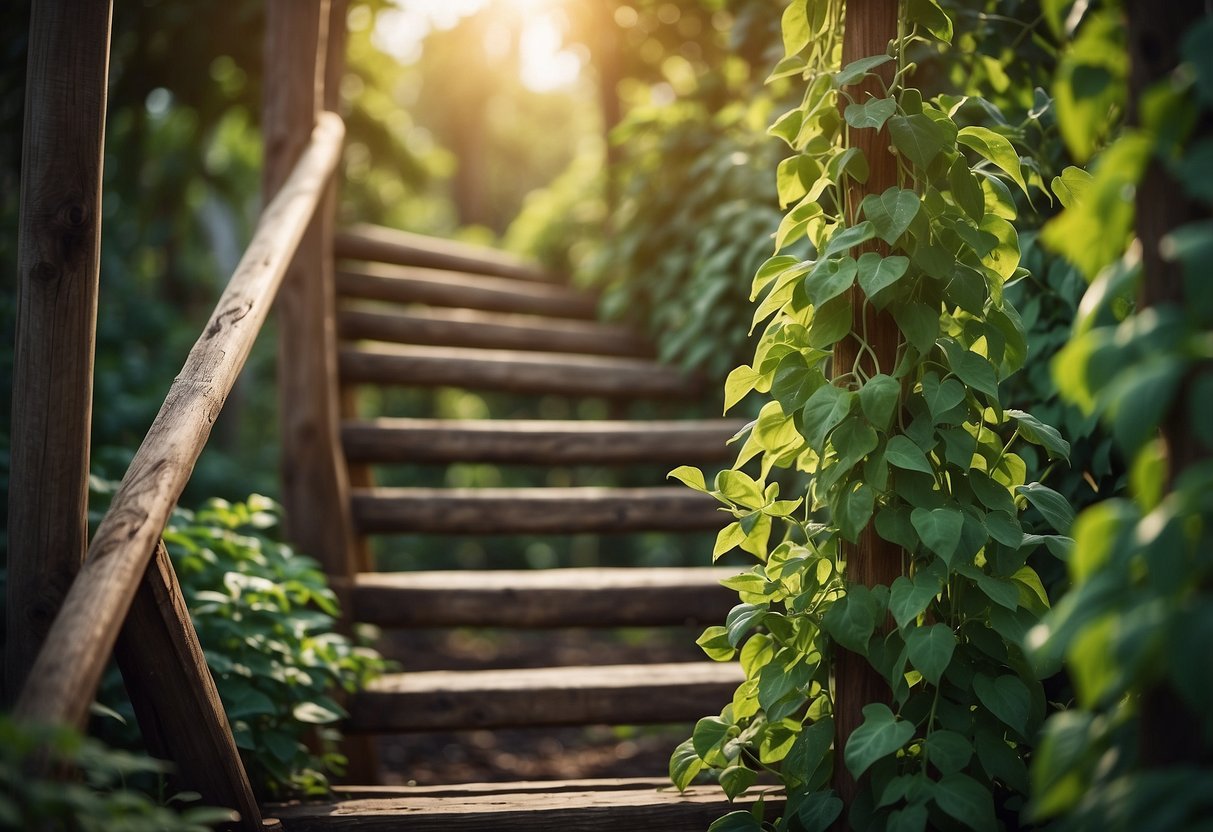
A rustic ladder trellis is a charming addition to your bean garden. It’s simple to make and adds a vintage feel to your space.
Using old wooden ladders or even creating your own with tree branches, you can build this trellis easily. Secure the ladder against a fence or use it as a free-standing structure.
This design not only supports your beans but also adds character to your garden. You can even hang small pots or decorations on the rungs for extra flair.
10) Patio Bean Planter
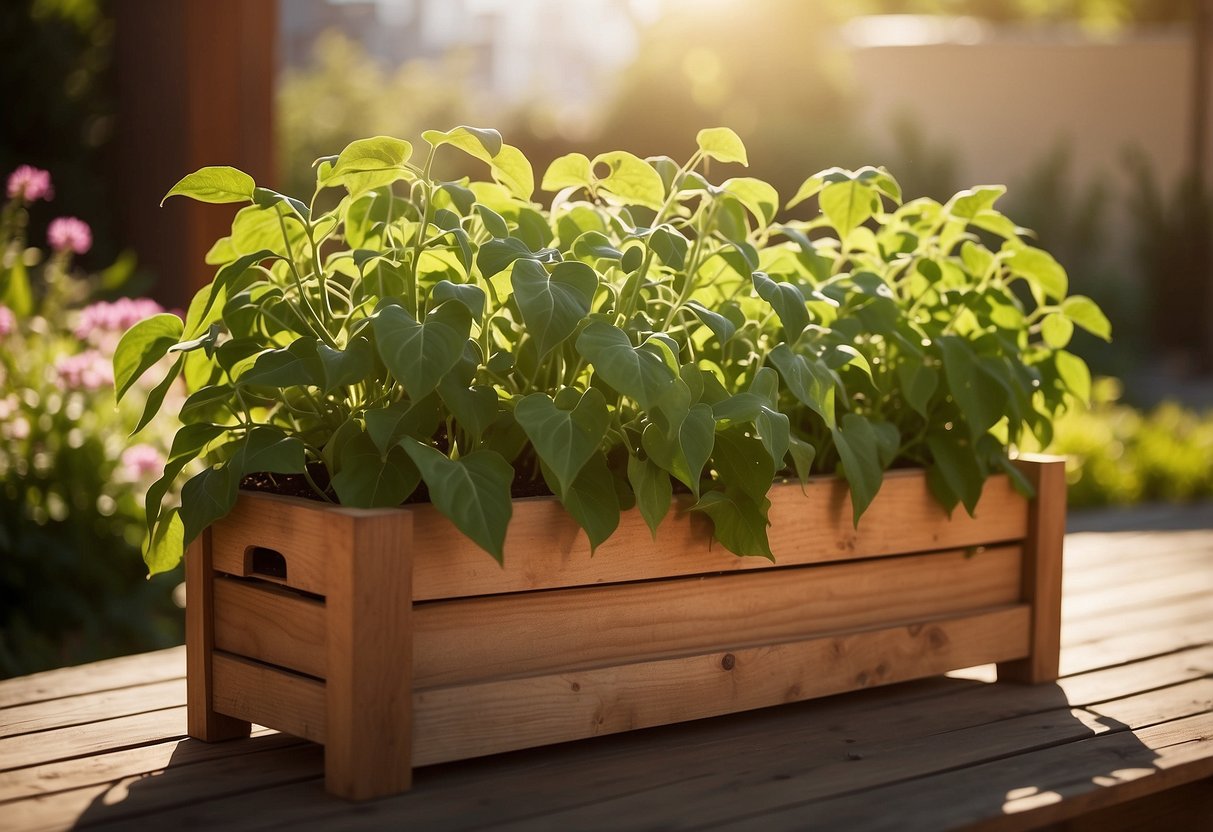
Growing beans in a patio bean planter is a fun way to enjoy fresh veggies. You can use a large pot or a makeshift container.
Choose bush beans if you have limited space. They don’t need support. If you prefer pole beans, set up a simple trellis with bamboo poles and garden twine for support.
Place your planter where it gets plenty of sunlight. Beans thrive in well-draining soil and need regular watering. This setup makes it easy to maintain and harvest your beans right from your patio.
For more ideas, check out these patio vegetable garden suggestions.
Benefits of Growing Beans in Your Garden

Growing beans in your garden can offer many advantages. They provide important nutrients, help improve your soil, and are surprisingly easy to cultivate.
Nutritional Value
Beans are packed with nutrients that are good for you. They are an excellent source of protein, which helps build and repair tissues. Eating beans can also give you plenty of fiber, which is important for digestion.
Beans contain various vitamins and minerals, such as vitamins B and C, iron, magnesium, and potassium. Including them in your meals can contribute to a well-balanced diet. When you grow your own beans, you can enjoy fresher produce that hasn’t been treated with chemicals.
Soil Enrichment
Beans can make your soil healthier. They do this through a process called nitrogen fixation. This means they take nitrogen from the air and convert it into a form that plants can use, which helps make your soil more fertile.
When you grow beans, you don’t just get a healthy crop—you also improve the quality of your garden soil. This benefit extends to other plants you might grow afterward. Planting beans can even increase crop yields in the future, making your garden more productive.
Easy to Grow
Beans are known for being easy to grow, even for beginners. They don’t require a lot of special care, which makes them a perfect choice for anyone new to gardening. Beans thrive in full sun and need well-draining soil.
Watering them regularly is important, but beans are quite resilient and can tolerate various soil types. You also don’t need to invest in a lot of tools or materials. With basic supplies, you can successfully grow beans and enjoy their numerous benefits.
Planting different varieties of beans can also add variety to your meals, giving you a fun and diverse gardening experience.
Types of Beans for Your Garden
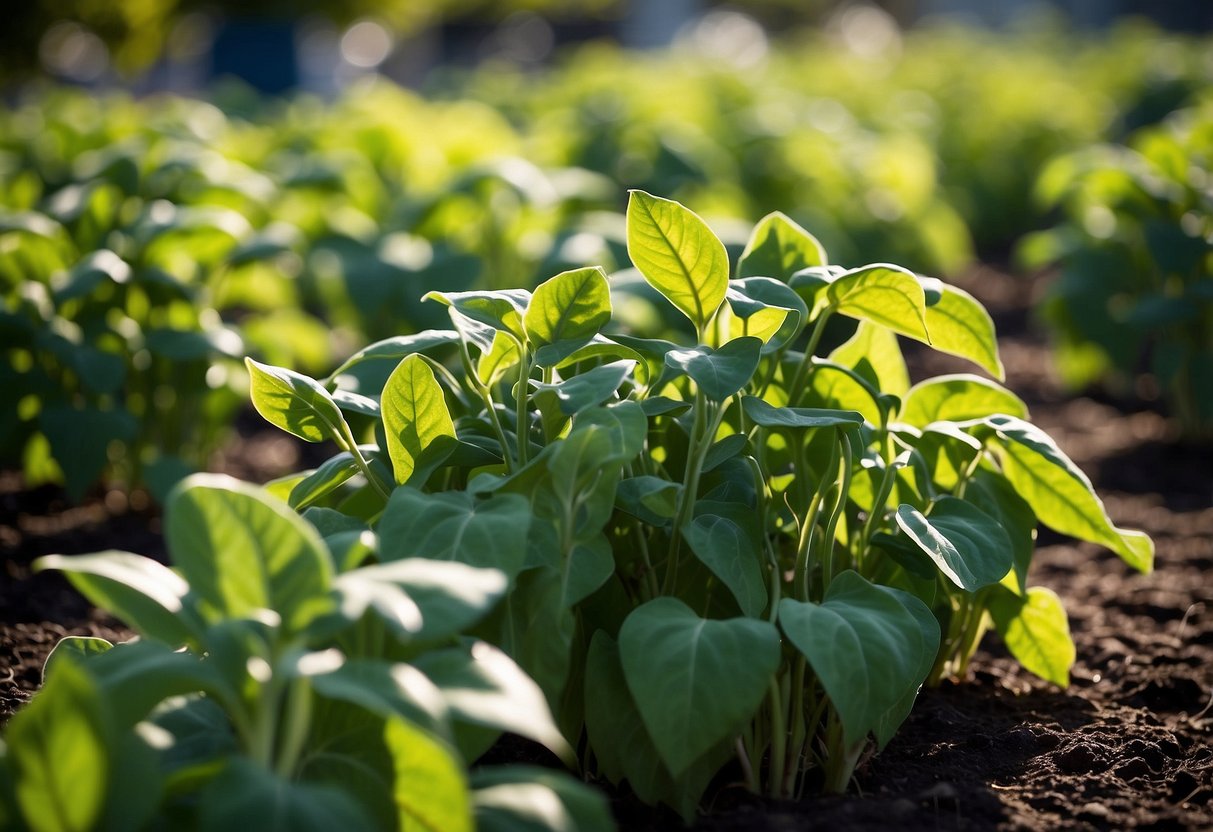
When choosing beans to grow in your garden, it’s important to know the difference between bush beans, pole beans, and lima beans. Each type has unique growing habits and benefits.
Bush Beans
Bush beans are a popular choice for many home gardens. These beans grow on small, compact plants that typically reach about 1-2 feet in height. They don’t require support, making them easy to manage.
Bush beans are also quick to mature, often ready to harvest in just 50-60 days. This makes them a perfect option if you want a fast-growing crop. Common varieties include Blue Lake and Contender.
Bush beans are also versatile in the kitchen. You can enjoy them fresh, steamed, or canned. They produce a large number of beans in a short period, ensuring a bountiful harvest.
Pole Beans
Pole beans grow on vines that can reach up to 10 feet tall. They need support, such as a trellis, poles, or stakes to climb on. This variety takes a bit longer to mature than bush beans, but they produce beans over a longer period.
Popular pole bean varieties include Blue Lake FM-1K, Kentucky Wonder, and Scarlet Runner. Pole beans’ extended harvest time means you can enjoy fresh beans for a longer season. They are also known for their robust flavor and texture.
With proper support, you can maximize vertical space in your garden, which is great if you have limited ground area. Pole beans also tend to be more disease-resistant, making them a hardy choice.
Lima Beans
Lima beans, also known as butter beans, are another excellent choice for your garden. They come in both bush and pole types, but they generally require a longer growing season—about 70-90 days to mature.
Lima beans are valued for their nutritional benefits. They are high in protein, fiber, and essential nutrients. You can find varieties such as Fordhook and Baby Lima beans, which vary in size and flavor.
These beans thrive in warm weather and well-drained soil. Lima beans are great for soups, stews, and side dishes, making them a versatile addition to your home-grown produce. Their creamy texture and subtle flavor are appreciated in many cuisines.
Each of these bean types offers unique advantages for any garden. Whether you need quick-growing bush beans, space-saving pole beans, or nutrient-rich lima beans, there’s a bean variety that fits your gardening goals.
Ideal Conditions for Growing Beans
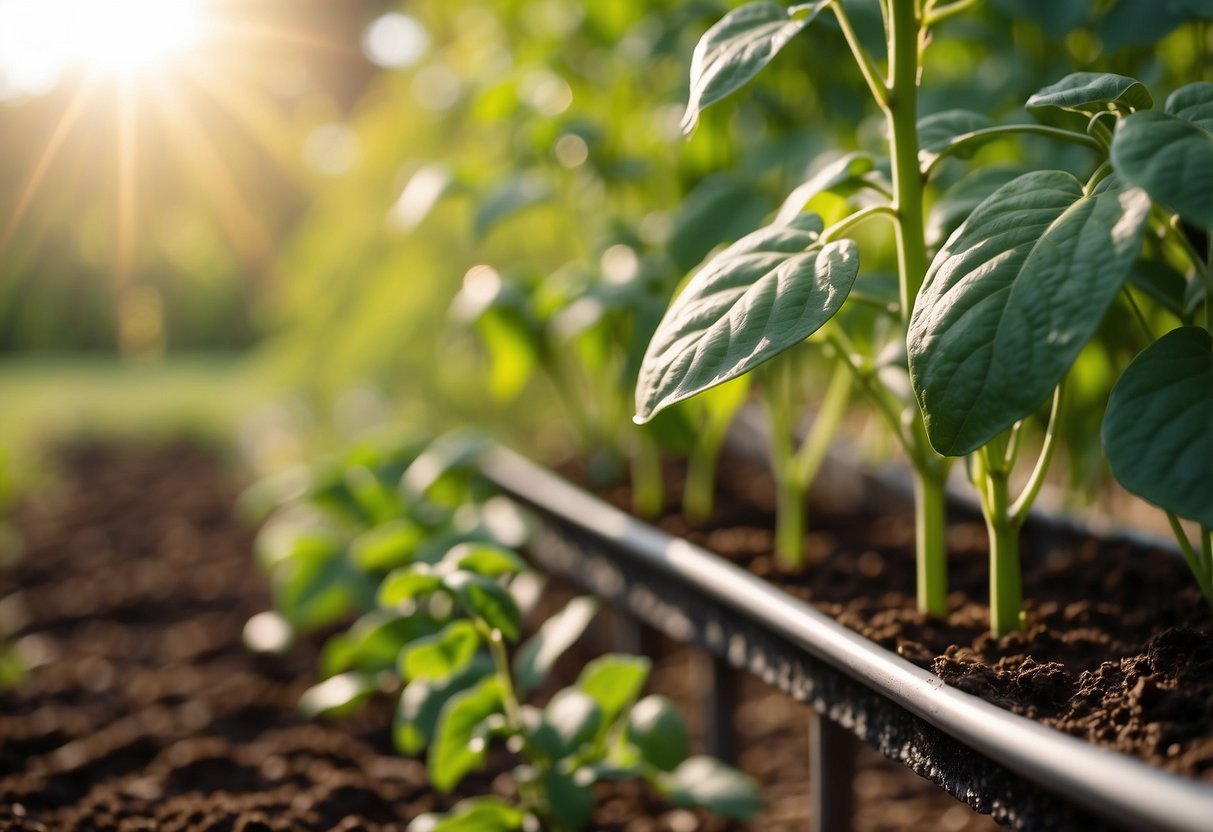
Growing beans successfully requires specific conditions, including well-prepared soil, ample sunlight, and consistent watering. Paying attention to these factors helps your beans thrive and produce a generous harvest.
Soil Preparation
Beans prefer well-draining soil rich in organic matter. A sandy or silty loam is ideal. If you have clay soil, amend it to break it up and allow the roots to grow freely. Compost or aged manure can enrich the soil, improve texture, and increase nutrient availability.
Proper soil pH is also important. Beans thrive in a pH range of 6.0 to 7.0. Test your soil before planting and adjust accordingly. Lime can raise pH, while sulfur can lower it. A balanced, slow-release fertilizer will give your beans the nutrients they need throughout the growing season.
Sunlight Requirements
Beans need plenty of sunlight to grow well. Aim for at least 6-8 hours of direct sunlight daily. Plant your beans in an area of your garden that receives the most light, ensuring there are no large trees or structures casting shadows over them.
Full sun encourages strong growth and increases the chances of a high yield. If you’re growing beans indoors or in a shady area, consider using grow lights to mimic natural sunlight. Reflective surfaces around your plants can also help to maximize light exposure.
Watering Needs
Consistent moisture is key for healthy bean plants, especially during flowering and pod development. Aim to provide about 1-2 inches of water per week. Adjust the amount based on weather conditions and soil type. During hot or dry periods, beans may need extra water.
Deep watering is better than frequent, shallow watering. It helps roots grow deeper and stronger. Mulching around your plants helps retain moisture and keep the soil cool. Use organic materials like shredded leaves or straw to create a 2-3 inch layer of mulch.







